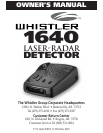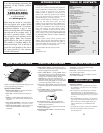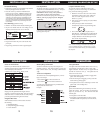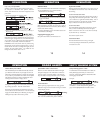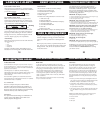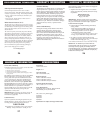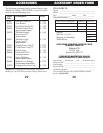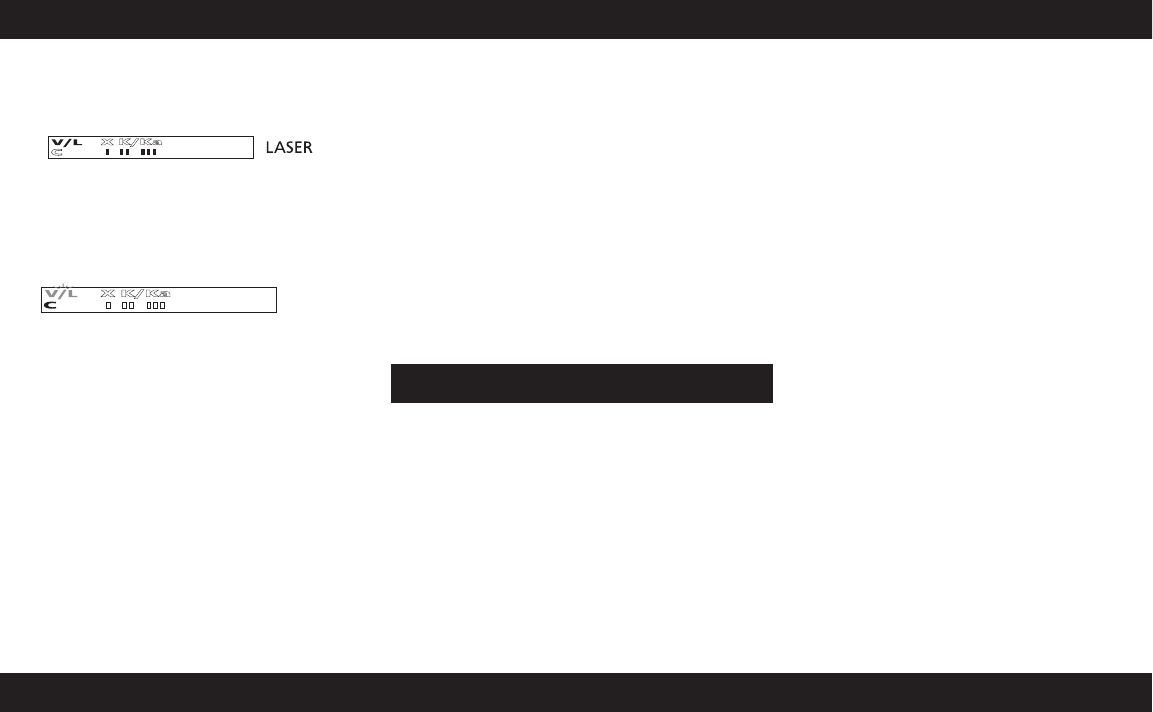
Reset Features
All user features can be reset to factory settings.
•
Unplug Power Cord from unit.
•
Pr
ess and hold Power and Quiet.
•
Plug Power Cord into unit.
•
W
ait for 2 beeps.
•
Release Power and Quiet button. Unit is now reset.
1. Audio to level (4).
2. Highway Mode ON.
3. Dim/Dark Mode to full illumination of display.
4. Auto Quiet Mode OFF.
5. VG-2 Detection Mode OFF.
6. Voice ON.
7. Battery Saver OFF.
Note: Must recalibrate compass after resetting detector.
LASER/VG-2 ALERTS
Laser Audio / Visual Alerts
When a laser signal is detected V/L and signal strength
is displayed, the audio alert is continuous for a minimum
of 3 seconds. Example:
The more “III” the closer the laser source.
VG-2 Audio / Visual Alerts
Note: You must turn this feature on in option select
mode before it will detect the VG-2 gun. When a VG-2
signal is detected, the detector “hides” its own radiated
signal and becomes undetectable by the VG-2.
Every 30 seconds, the detector checks for a VG-2 signal. If
a VG-2 signal is still present, the unit continues to hide
and repeats the VG-2 alert. If no signal is detected, two
beeps are provided, indicating an “all clear” condition.
During VG-2 Alert X, K, and Ka band signals cannot be
received. (Reference page 25 for VG-2 information.)
Alert Priority
When two or more signals are received at the same time,
the alert priority is:
1. Laser
2. VG-2
3. Speed Radar
4. Safety Radar
Example: If X band is alerting, then suddenly VG-2 is
detected, the VG-2 warning will override the X band alert.
N
S
E
W
S
W
N
S
E
W
Blinking
RESET FEATURES
19
Your Whistler detector is expertly engineered and
designed to exacting quality standards to pr
ovide you
with r
eliable, trouble-free operation. If your unit has
been correctly installed following the guidelines in this
manual, but is not operating optimally, please r
efer to the
tr
oubleshooting guide below.
PROBLEM: No display or audio.
•
Check fuse in Whistler plug; r
eplace if necessary with a 2 amp 3AG type.
•
Check fuse for lighter socket; replace if necessary.
•
Make sure lighter socket is clean.
PROBLEM: Unit alarms when vehicle hits bumps.
•
Check for loose lighter socket; tighten and clean.
•
Check connections at both ends of power cord. Substitute another cord
to determine if cord is defective. Return defective cor
d to the factory.
PROBLEM: Unit alarms when using vehicle equipment,
electrical accessories (brakes, power mirrors/windows,
dir
ectionals, horn, etc.)
, or when accelerating.
•
Vehicle’s electrical system, including battery and alternator, may have
electrical noise. Install a filter capacitor (470mfd. 25 volt or larger
capacitance value) on the back of the lighter socket.
PROBLEM: Audio alerts are not loud enough.
•
Cancel Auto Quiet Mode or City Mode.
•
Check audio level setting (see page 10 & 11).
PROBLEM: No X band signals.
•
Cancel City 2.
PROBLEM: Unit gives laser alert when accelerating.
•
Possible bad or low quality distributor cap. Replace with high quality cap.
If difficulties occur which cannot be solved by information
in this Troubleshooting Guide, please call Whistler
Consumer Relations at 1-800-531-0004 before returning
your unit for service.
18
During the summer months, avoid pr
olonged exposure
to direct sunlight by removing your unit from the dash
when your vehicle is parked for an extended period of
time.
Do not spray water, cleaners, or polishes directly onto the
unit. The spray may penetrate through the openings and
damage the unit. Also, do not use any abrasive cleaners
on the units exterior.
TROUBLESHOOTING GUIDE
20
CARE & MAINTENANCE
ARE DETECTORS LEGAL?
21 22
SPEED MONITORING TECHNOLOGIES
Radar Facts
A radar gun operates by transmitting radio waves at certain
frequencies which reflect off objects and are then picked up by the
radar gun’s receiving section. When a radar beam reflects off a
moving target, a measurable frequency shift occurs. The radar
unit converts this shift into miles per hour to determine your
vehicle’s speed. Currently, the FCC (Federal Communications
Commission) permits operation to traffic radar guns at X Band
(10.500 - 10.550 GHz), K Band (24.050 - 24.250 Ghz), and Ka Band
(33.400 - 36.000 GHz).
Note: A radar detector will not alarm if an officer is not transmitting
on any one of the above radar bands.
23
SPEED MONITORING TECHNOLOGIES
Laser Facts
It’s well documented that many radar guns cannot reliably
provide the speed of a targeted vehicle that is traveling in a
group of vehicles. In contrast, a laser gun can target a specific
vehicle out of a line of traffic and determine its speed. The
advantage of laser over radar in terms of target identification is
the result of the laser gun’s narrow beam. A radar transmission
can cover more than a four-lane highway at a distance of 1,000
feet, compared with a laser transmission which covers about 6
feet at the same distance. For best protection, keep these points
in mind:
•
Because you vehicle’s license plate or headlights are the laser
gun’s primary targets, mounting your Whistler detector on the
dashboard can improve laser detection at short range.
•
Do not follow closely behind any vehicle you cannot see
through. If you can’t see past a vehicle ahead of you, chances
are your detector won’t either.
•
The receiving range of your laser detector will not be the same
as a radar detector. Laser guns are most often used at short
range.
Whistler Laser/Radar detectors receive all current laser guns
which operate at a laser wavelength of 905 +/- 10mm.
•
Pro Laser
™
I II III
•
LT1 20-20
•
Ultra Lyte
In Most States YES!
Laser-radar detectors are legal in every state (with the exception of
Virginia and Washington D.C., which have local regulations r
estricting
the use of radar receivers in any vehicle) when used in automobiles or
light trucks (under 10,000 lbs.).
Concerning trucks over 10,000 lbs., the Federal Highway
Administration (FHwA) issued a regulation, effective January, 1944
which prohibits radar and laser detector use in the types of
vehicles nationally.
Prior to the FHwA regulation, laws existed in the state of New
York restricting the use of radar detectors in trucks over 18,000 lbs.
and in Illinois in trucks over 26,000 lbs.
FCC ID HSXWH02
This device complies with part 15 of the FCC Rules.
Operation is subject to the following two conditions: (1)
This device many not cause harmful interference, and (2)
this device must accept any interference received, including
interference that may cause undesired operation.
IMPORTANT
FCC requirements state that changes or modifications not
expressly approved by Whistler could void the user’s
authority to operate the equipment.



